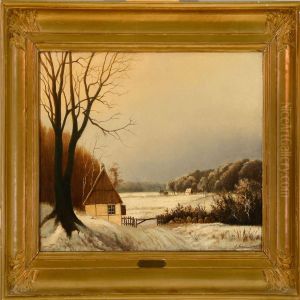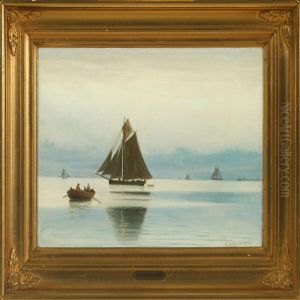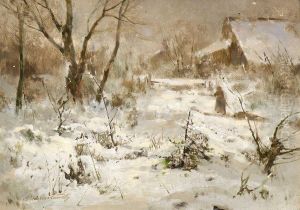A. Andersen-Lundby Paintings
Anders Andersen-Lundby, often referred to simply as A. Andersen-Lundby, was a Danish landscape painter born on December 16, 1841, in Lundby, Denmark. He is known for his winter landscapes featuring snowy scenes, which became his signature subject and contributed to his popularity, especially in Germany.
Andersen-Lundby initially trained as a painter in Copenhagen, and in the early stages of his career, he was influenced by the Danish Golden Age of painting, a period of exceptional creative activity in Denmark in the first half of the 19th century. His early works exhibit the fine detailing and subdued colors typical of this period.
In 1876, Andersen-Lundby moved to Munich, which was then an important center for artists. There, he became part of a community of Scandinavian painters who were drawn to the city's vibrant art scene. Munich's influence is evident in the evolution of his painting style, which became more focused on atmospheric effects and the play of light within his winter landscapes.
Andersen-Lundby's work was characterized by a remarkable ability to capture the nuances of light reflecting on snow, with a particular emphasis on the late afternoon sun. His paintings often depicted the serene and quiet moments of rural life, with an emphasis on the calm and peacefulness of the countryside. His winter scenes, which often included figures and animals, were not only admired for their beauty but also for their technical precision and the emotional resonance they evoked.
Throughout his career, Andersen-Lundby exhibited his work widely, both in Denmark and abroad, and his paintings were well received by critics and the public alike. His works are part of several museum collections, including those in Denmark and Germany.
Andersen-Lundby continued to paint and exhibit his work until his death on January 4, 1923, in Munich. His legacy is that of a master of the winter landscape, whose work continues to be appreciated for its tranquil beauty and its embodiment of the Scandinavian landscape tradition.










